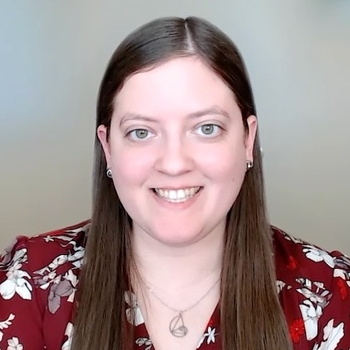
U-M BME’s Anne Draelos Named a 2024 Sloan Research Fellow in Neuroscience
The grant funding will support Dr. Draelos’ research, which focuses on using real-time adaptive machine learning.

The grant funding will support Dr. Draelos’ research, which focuses on using real-time adaptive machine learning.
Congratulations to U-M BME’s Anne Draelos, who has been named a 2024 Sloan Research Fellow in Neuroscience. Awarded annually since 1955, the fellowships honor exceptional U.S. and Canadian researchers whose creativity, innovation, and research accomplishments make them stand out as the next generation of leaders.
Dr. Draelos, an Assistant Professor of Biomedical Engineering and Computational Medicine & Bioinformatics and a Michigan Neuroscience Institute Affiliate, is one of 126 scientists receiving this award in 2024, and is one of three U-M faculty in this cohort.
“Sloan Research Fellowships are extraordinarily competitive awards involving the nominations of the most inventive and impactful early-career scientists across the U.S. and Canada,” says Adam F. Falk, president of the Alfred P. Sloan Foundation. “We look forward to seeing how Fellows take leading roles shaping the research agenda within their respective fields.”
Since the first Sloan Research Fellowships were awarded in 1955, 129 faculty from U-M have received this honor.
Open to scholars in seven fields—chemistry, computer science, Earth system science, economics, mathematics, neuroscience, and physics—the Sloan Research Fellowships are awarded in close coordination with the scientific community. Candidates must be nominated by their fellow scientists, and winners are selected by independent panels of senior scholars based on a candidate’s research accomplishments, creativity, and potential to become a leader in their field. More than 1,000 researchers are nominated each year. Winners receive a two-year, $75,000 fellowship which can be used flexibly to advance the Fellow’s research.
“U-M BME is immensely proud of Dr. Draelos, whose work addresses problems that lie at the interface of modern computational and experimental neuroscience,” said Mary-Ann Mycek, the William and Valerie Hall Department Chair of Biomedical Engineering and Professor, Biomedical Engineering. “By honoring her work, the Sloan Foundation and the scientific community reinforce the importance of Dr. Draelos’ contributions in helping U-M BME achieve our research and educational missions.”
“I feel very grateful to be receiving this honor,” Dr. Draelos said. “This award feels like an affirmation of my research plans, and it is exciting to me that the Sloan Foundation senses the same enthusiasm I do by including me in this program.”
The grant funding will support Dr. Draelos’ research, which focuses on using real-time adaptive machine learning. “We design computational methods to collect data, analyze it in real time, and use it to build a model of what is happening in the brain at that particular moment in time,” Dr. Draelos explained. “Then, using our current information, we design perturbations: ways to stimulate the neural circuit in order to learn something more than we could just observe. This particular project would be to construct a certain kind of latent space, or lower dimensional space, that better represents neural activity patterns. These kinds of methods have been useful for understanding how neural activity drives simple behaviors.”
Dr. Draelos is working on doing the same thing in more complex naturalistic behaviors in real time so she and her team can immediately test models and examine potential causal relationships between neural latent dynamics and resultant changes in behavior.
She said that a somewhat simplistic real-world analogy describing the power behind her research would be adaptive games such as Wordle, Battleship or 20 Questions. “If you have played one of these games, for instance 20 Questions, you have solved this,” Dr. Draelos said. “By being intelligent and asking a series of yes or no questions, you can figure out what an unknown object is. You pick your next question based on all the other previous questions and answers. This lets you go from a huge list of possibilities to a quickly narrowed down set to ultimately solve the puzzle in fewer than 20 questions. We aim to use the same idea to determine how millions of neurons in a brain work together to do anything as simple as picking up coffee and drinking it.”
Dr. Draelos collaborates extensively with researchers who use a variety of experimental animal models. “In larval zebrafish, for example, you can record neural activity from just about their entire brain,” she said. “We are also excited to work all the way up to non-human primates, where you record from fewer neurons, but the animals perform more complicated behaviors. My algorithms and approaches are intended to be used across animal models. Because they are data-driven and can adapt themselves to the specific data of the individual, they can be applied to fish, mice, monkeys and potentially, eventually, humans.”
Dr. Draelos said that her research fosters tight model experiment integration. “Part of the novelty of what I do is putting models into experiments and having them inform each other,” she said. “The models get better, and the experiments get better as well, which is why I think it’s so important to collaborate closely with other people. Part of the reason I came to Michigan is that it is very collaborative, with many experts who want to partner together on interesting neuroscience and neural engineering projects. Having a world-class engineering school and medical school together at one university is a key factor for fostering this collaborative spirit.”